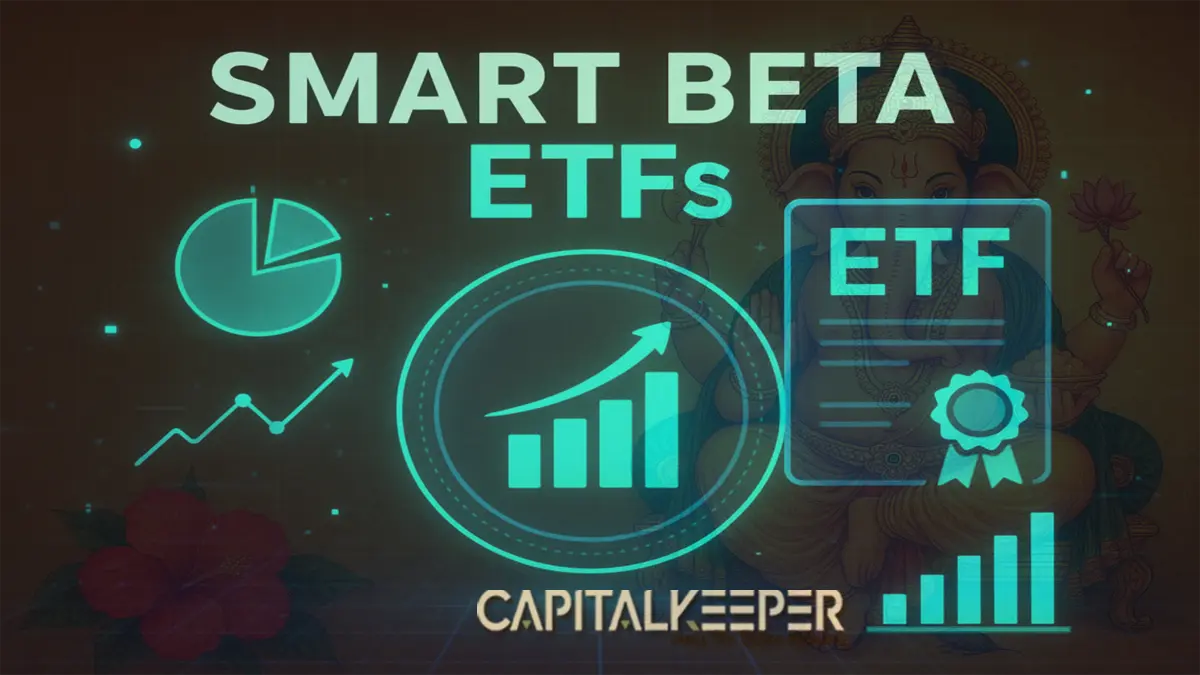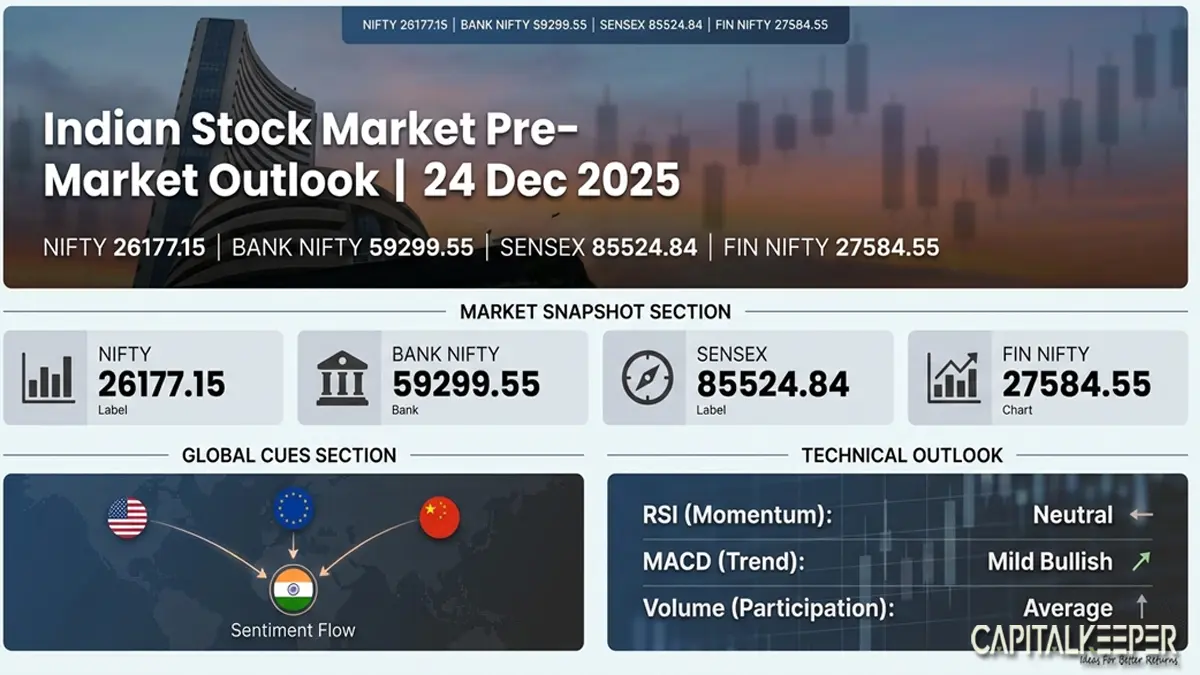SIP in ETF: Benefits, Challenges & Best ETFs in India 2025
By CapitalKeeper | Beginner’s Guide | Mutual Funds | Market Moves That Matter
Discover how SIP in ETFs works, its key benefits, challenges, and a list of popular ETFs in India. Learn why systematic investing in ETFs can help you build long-term wealth.
Introduction
Over the past decade, Exchange Traded Funds (ETFs) have gained massive popularity among Indian investors. They provide a low-cost, diversified, and transparent way of participating in the stock market. Traditionally, ETFs were seen as a lump-sum investment product. However, the concept of Systematic Investment Plans (SIPs) in ETFs is now reshaping investor behavior by combining the convenience of mutual fund SIPs with the cost efficiency of ETFs.
But before diving in, let’s decode what SIP in ETFs means, how it works, its benefits and challenges, and which popular ETFs in India are worth considering.
What is SIP in ETF?
A Systematic Investment Plan (SIP) is a disciplined way of investing a fixed amount regularly (monthly or quarterly) into a financial instrument. Traditionally associated with mutual funds, SIPs have now been extended to ETFs through platforms that allow investors to buy fractional or small quantities of ETFs periodically.
In essence, SIP in ETFs is about spreading investments over time in small, manageable installments rather than making one-time bulk purchases.
For example:
- Instead of investing ₹1,20,000 at once in Nifty 50 ETF, you can invest ₹10,000 every month via SIP.
- This helps in rupee cost averaging and removes the pressure of timing the market.
How SIP in ETFs Works
- Choose an ETF – Select an ETF based on your investment goals (e.g., Nifty 50, Bank Nifty, Gold, International indices, or Thematic ETFs).
- Set a SIP Frequency & Amount – Decide how much and how often you want to invest.
- Brokerage/AMC Platform – Use a stockbroker’s platform or AMC’s direct portal that offers SIP features in ETFs.
- Auto Debit – Your bank account gets auto-debited, and ETF units are credited to your demat account at prevailing market prices.
Unlike mutual fund SIPs, ETF SIPs involve buying units at market price (NAV + market movement), so units may vary each time.
Benefits of SIP in ETFs
1. Low-Cost Investing
ETFs generally have lower expense ratios compared to mutual funds. Adding SIP ensures disciplined investing without paying high fees.
2. Diversification
By investing in an ETF through SIP, you gain exposure to a basket of securities (stocks, bonds, commodities) instead of betting on one or two companies.
3. Rupee Cost Averaging
Since markets are volatile, SIP helps in averaging the purchase cost. When markets are high, you buy fewer units; when they are low, you accumulate more.
4. Liquidity & Transparency
ETFs trade like stocks on exchanges, which means you can buy or sell them anytime during market hours. SIP makes this process automated and convenient.
5. Long-Term Wealth Creation
Compounding and disciplined investing help build wealth over time. For instance, SIP in Nifty 50 ETF over 10+ years historically delivered strong CAGR returns of 10-12%.
Challenges of SIP in ETFs
While SIP in ETFs sounds great, investors must be aware of certain challenges:
1. Execution Issues
Unlike mutual funds, where SIP is automated, ETF SIPs depend on broker execution. Some brokers allow automation, while others require manual execution.
2. Liquidity Constraints
Not all ETFs in India have high trading volumes. Low liquidity can result in wider bid-ask spreads, which impacts effective returns.
3. Tracking Error
ETFs are designed to replicate indices, but some funds have tracking errors due to expenses or poor management. This can lead to underperformance.
4. Demat Dependency
Unlike mutual funds, ETF SIP requires a demat account. This may not be convenient for all retail investors.
5. Market Timing Risk
Although SIP reduces timing risk, ETFs still trade intraday like stocks. The execution price may vary compared to mutual fund NAV-based SIPs.
Popular ETFs for SIP in India (2025)
If you’re considering starting a SIP in ETFs, here are some of the most popular ETF categories in India:
1. Index ETFs
- Nippon India Nifty 50 ETF
- SBI Nifty Bank ETF
- ICICI Prudential Nifty Next 50 ETF
Best for investors seeking broad market exposure.
2. Sectoral/Thematic ETFs
- Kotak PSU Bank ETF
- Nippon India Pharma ETF
- ICICI Prudential IT ETF
Suitable for those betting on specific sectoral growth themes.
3. International ETFs
- Motilal Oswal Nasdaq 100 ETF
- Nippon India Hang Seng ETF
Provides global diversification.
4. Gold ETFs
- HDFC Gold ETF
- SBI Gold ETF
Acts as a hedge against inflation & market volatility.
5. Debt ETFs
- Bharat Bond ETF (various maturities)
- Nippon India ETF Liquid BeES
Good for conservative investors looking for stable returns.
SIP in ETFs vs SIP in Mutual Funds
| Feature | SIP in ETFs | SIP in Mutual Funds |
|---|---|---|
| Expense Ratio | Lower (0.05%–0.3%) | Higher (0.5%–2%) |
| Liquidity | Intraday tradable | Only end-of-day NAV |
| Transparency | High (real-time prices) | Moderate |
| Execution | May require broker automation | Fully automated |
| Tracking Error | Possible | Managed by AMC |
Verdict: SIP in ETFs is better for cost-conscious, disciplined investors with a demat account, while mutual fund SIPs suit beginners who prefer simplicity.
Who Should Invest in ETF SIPs?
- Young Investors – Can start with small amounts and stay invested long term.
- Cost-Conscious Investors – Benefit from low expense ratios.
- DIY Investors – Comfortable with demat and stock market investing.
- Diversification Seekers – Want exposure to equities, gold, debt, and international markets.
Expert Tips Before Starting an ETF SIP
- Check ETF Liquidity – Stick to high-volume ETFs to avoid slippage.
- Choose Reputable Fund Houses – ICICI, Nippon, SBI, HDFC, Kotak are reliable.
- Avoid Overlapping ETFs – Don’t invest in multiple ETFs tracking the same index.
- Review Performance Annually – Ensure your chosen ETF has low tracking error.
- Stay Long-Term – SIP works best with patience and consistency.
Conclusion
SIP in ETFs is an excellent way to blend the cost-efficiency of ETFs with the discipline of SIP investing. While execution and liquidity remain challenges, increasing investor participation and evolving platforms are solving these hurdles.
If chosen wisely, SIP in ETFs can be a powerful wealth-building strategy for long-term investors. With diversification across indices, gold, and even international markets, they can provide steady growth while managing risks.
📌 For daily trade setups, technical learning, and smart investing tips, stay tuned to CapitalKeeper.in
📌 For more real-time updates, trade setups, and investment insights — follow us on [Telegram] and [WhatsApp Channel] subscribe to our newsletter!

Subscribe Now , Join Telegram the Crypto Capital Club, Get Free Crypto Updates
📌 Disclaimer
The content provided on CapitalKeeper.in is for informational and educational purposes only and does not constitute investment, trading, or financial advice. While we strive to present accurate and up-to-date market data and analysis, we make no warranties or representations regarding the completeness, reliability, or accuracy of the information.
Stock market investments are subject to market risks, and readers/investors are advised to conduct their own due diligence or consult a SEBI-registered financial advisor before making any investment decisions. CapitalKeeper and its authors are not liable for any loss or damage, direct or indirect, arising from the use of this information.
All views and opinions expressed are personal and do not reflect the official policy or position of any agency or organization. Past performance is not indicative of future results.By using this website, you agree to the terms of this disclaimer.
Ranjit Sahoo
Founder & Chief Editor – CapitalKeeper.in
Ranjit Sahoo is the visionary behind CapitalKeeper.in, a leading platform for real-time market insights, technical analysis, and investment strategies. With a strong focus on Nifty, Bank Nifty, sector trends, and commodities, she delivers in-depth research that helps traders and investors make informed decisions.
Passionate about financial literacy, Ranjit blends technical precision with market storytelling, ensuring even complex concepts are accessible to readers of all levels. Her work covers pre-market analysis, intraday strategies, thematic investing, and long-term portfolio trends.
When he’s not decoding charts, Ranjit enjoys exploring coastal getaways and keeping an eye on emerging business themes.
📌 Follow Ranjit on:
LinkedIn | Twitter/X | Instagram | ✉️ contact@capitalkeeper.in
















Leave a Reply